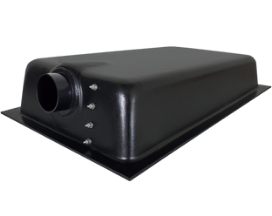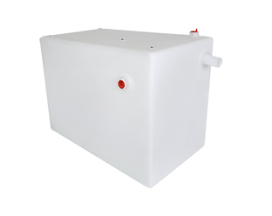Water Tank Safety
12th Jun 2024
Series 1, Episode 8


Owning an RV offers unparalleled freedom, allowing you to travel and explore the world at your own pace. However, with this freedom comes the responsibility of ensuring that your RV’s water tank is safe and clean. Proper water tank care and safety are crucial for maintaining good health on the road. This article provides professional and informative guidance to help RV owners manage their water tanks effectively.

Understanding the Risks
- Contaminants from Refilling: When refilling your RV’s water tank from various locations, you can never be entirely sure of what contaminants might be present in the water. Different sources can introduce bacteria, viruses, chemicals, and other harmful substances. This unpredictability necessitates rigorous water safety measures.
- Secondhand Tanks: Using secondhand water tanks poses additional risks. You often cannot trace the history of these tanks, making it challenging to identify potential sources of contamination. Previous usage may have left residues that are difficult to eliminate without thorough cleaning and disinfection.
- Improper Cleaning and Stagnation: Improperly cleaned tanks or water left sitting for extended periods can harbor dangerous biofilms and bacteria. Stagnant water creates an environment where pathogens can multiply, leading to serious health hazards.

Ensuring Water Quality
- Filtration Systems: Installing high-quality filtration systems is your first line of defense against contaminants. Filters can remove sediments, particulates, and some microorganisms from the water. Consider using a combination of filters, including sediment filters, carbon filters, and UV purifiers, to enhance water safety.
- Disinfection Methods: Disinfecting your water is essential. Chlorination, UV treatment, and ozone treatment are effective methods for killing harmful microorganisms. Chlorination involves adding chlorine-based disinfectants to the water, while UV and ozone treatments use light and ozone gas to neutralize pathogens without adding chemicals.
- Regular Water Testing: Regularly test your water for contaminants, including bacteria, heavy metals, and chemical pollutants. Water testing kits are readily available and easy to use, allowing you to monitor water quality and take corrective actions promptly.

Maintenance and Inspection
- Routine Inspections: Regular inspections of your water tank are crucial. Check for leaks, cracks, and signs of wear and tear. Ensure all seals and fittings are secure to prevent contamination.
- Cleaning Protocols: Adopt a consistent cleaning routine. To clean the tank, drain it completely, scrub the interior with a non-toxic cleaner, rinse thoroughly, and disinfect. Regular cleaning prevents the build-up of sediments and biofilm.
- Secure Access Points: Ensure that all access points, including lids and hatches, are tightly sealed. Secure access points prevent contaminants from entering the tank and maintain the integrity of the stored water.
Water Filter Screens for Your Tank
Ensuring the safety and quality of your RV's water supply is essential for a worry-free adventure. By following best practices for water tank ( https://www.icondirect.com/fresh-water-tanks/) care, you can protect your health and enjoy fresh, clean water on the road. When it comes to safeguarding your water system, consider using ICON Technologies' water filter screen. Our simple yet effective solution slips into your NPT fitting before your connections, protecting your water pump from debris and sediments that may accumulate in your tank. Read more to learn about RV freshwater tanks and all the details you need to know.
